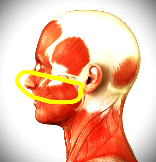Quick Overview
What is the Zygomaticus Minor Muscle? The Zygomaticus Minor muscle is a lesser-known facial muscle that complements the Zygomaticus Major in creating genuine and expressive smiles.
It is responsible for raising the upper lip and forming a subtle smile. The zygomaticus minor muscle is attached to the zygomatic bone at the cheekbone and to the upper lip. It is innervated by the facial nerve and supplied blood by the facial artery.

Table of Contents
Anatomy
The Zygomaticus Minor muscle is a slender muscle located in the midface region. It originates from the zygomatic bone (cheekbone) and extends to the upper lip.
| Muscle | Description |
| Origin | Lateral surface of the zygomatic bone, just posterior to the zygomaticomaxillary suture |
| Insertion | Upper lip, blending with the muscles of the upper lip (levator labii superioris and orbicularis oris) |
| Blood Supply | Facial artery |
| Nerve Supply | Facial nerve |
| Function | Raises the upper lip, exposes maxillary teeth |
Location
This muscle is situated in the midface, running from the cheekbone to the upper lip. It works in tandem with the Zygomaticus Major muscle to produce coordinated smile movements.
Function
The primary function of this muscle is to assist in elevating the upper lip during smiling. It works in synergy with the Zygomaticus Major muscle to create a harmonious and inviting smile.
Nerve Supply:
It is innervated by the facial nerve (cranial nerve VII), which conveys the signals required for muscle contraction and the formation of smiles.
Blood Supply:
Blood supply to this muscle is provided by branches of the facial artery, ensuring it receives the necessary oxygen and nutrients for optimal function.
Common Zygomaticus Minor Muscle Issues:
1- Smile Stiffness: Occasionally, individuals may experience smile stiffness or restricted upper lip movement due to issues with this muscle.
Symptoms: Limited upper lip mobility, difficulty in forming natural smiles.
Treatment: Facial exercises, massage, and relaxation techniques to improve muscle flexibility.
2- Lip Asymmetry: Problems with this muscle can contribute to lip asymmetry, where one side of the upper lip appears higher than the other during smiling.
Symptoms: Uneven smile, self-consciousness.
Treatment: Facial exercises, muscle-strengthening exercises, and dental interventions to correct asymmetry.
Exercises for Zygomaticus Minor Muscle:
Enhancing the strength and flexibility of this muscle can contribute to more beautiful and harmonious smiles. Here are some exercises to consider incorporating into your daily routine:
1- Upper Lip Lift:
- Gently lift your upper lip as high as you can while maintaining a relaxed facial expression.
- Hold for a few seconds and release.
- Repeat this exercise to strengthen the Zygomaticus Minor muscle and improve upper lip mobility.
2- Smile Coordination:
- Practice smiling in front of a mirror, paying attention to the symmetry and coordination of both sides of your smile.
- This exercise helps you become more aware of your smile and its balance.
Questions
1- What is the role of the Zygomaticus Minor muscle in facial expressions and smile formation?
This muscle plays a vital role in elevating the upper lip during smiling, contributing to the formation of genuine and inviting smiles.
2- How can issues with the Zygomaticus Minor muscle impact the symmetry and aesthetics of one’s smile?
Problems with the Zygomaticus Minor muscle can lead to smile stiffness, lip asymmetry, and restricted upper lip mobility, affecting the symmetry and beauty of one’s smile.
3- Are there specific exercises designed to improve the flexibility and strength of the Zygomaticus Minor muscle?
Yes, exercises such as “upper lip lifts” and “smile coordination” can help enhance the flexibility and strength of this muscle, resulting in more harmonious and expressive smiles.
4- Can smile asymmetry caused by the Zygomaticus Minor muscle be corrected through non-surgical means?
Yes, non-surgical interventions such as facial exercises and dental treatments can help correct smile asymmetry caused by issues with this muscle.
5- How does awareness and care of the Zygomaticus Minor muscle contribute to improved non-verbal communication and interpersonal connections?
Being mindful of the Zygomaticus Minor muscle’s health and function allows individuals to convey genuine and inviting smiles, fostering better non-verbal communication and stronger interpersonal connections.
